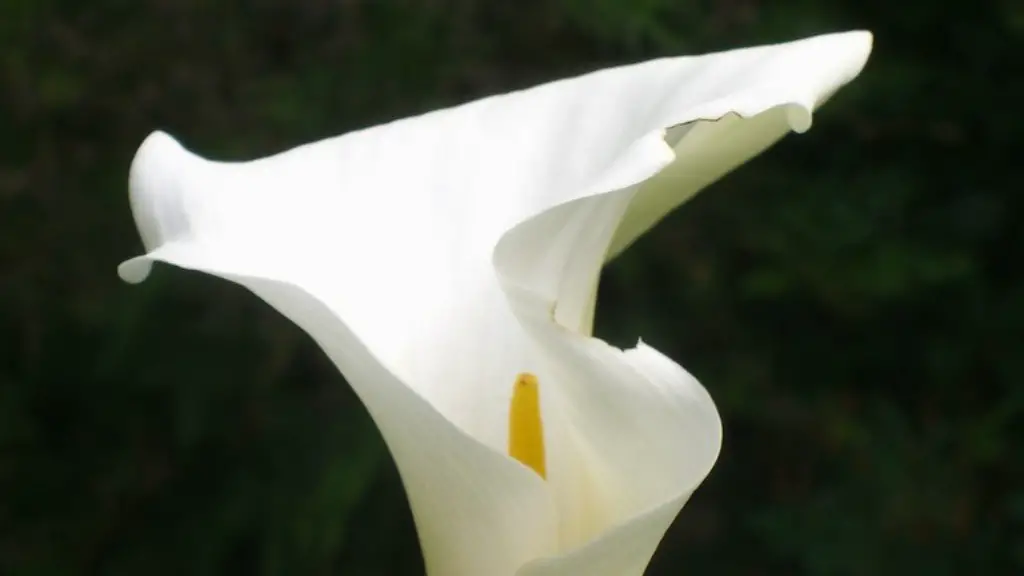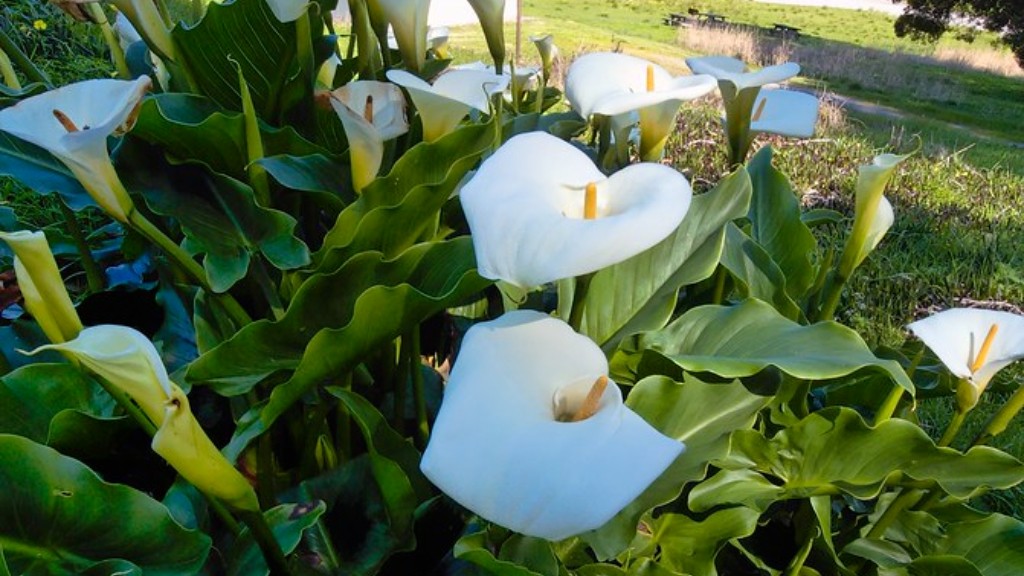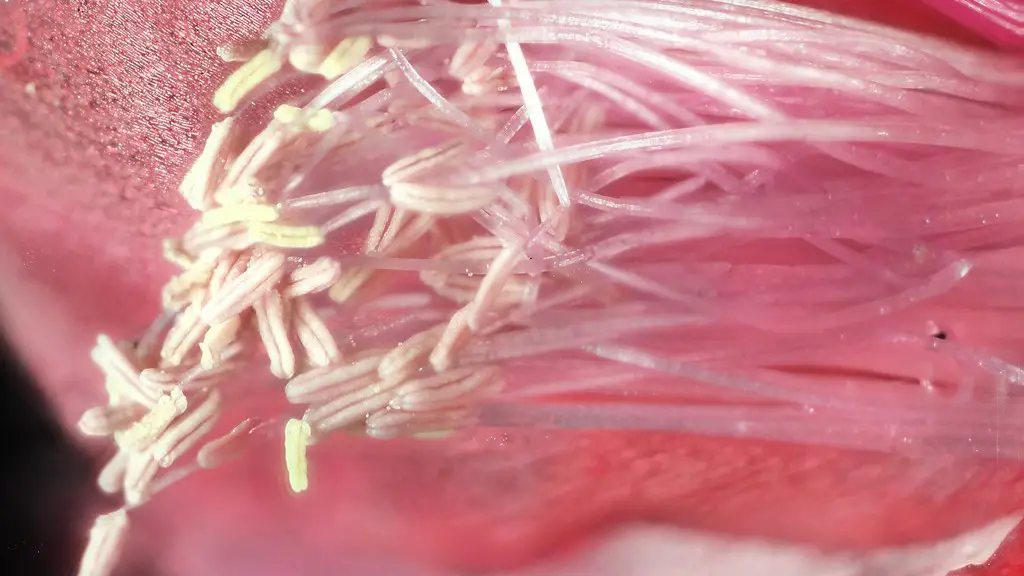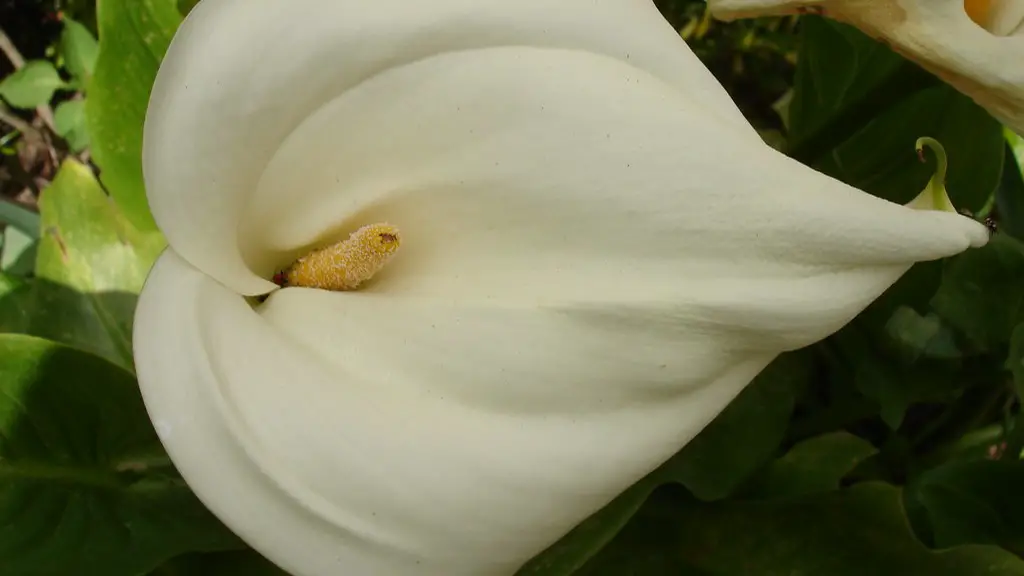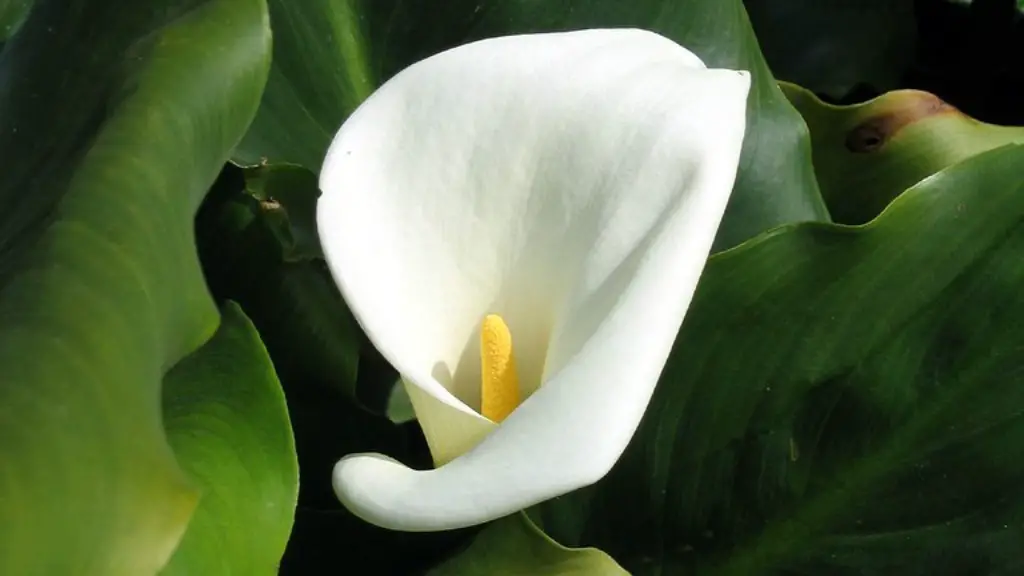One of the most popular houseplants is the Calla Lily. Due to their vibrant colors and elegant shape, these flowers are often used in bouquets and centerpieces. Although Calla Lilies are relatively easy to care for, it is important to know how to properly water them.
Here are a few tips on how to water your Calla Lily:
– Water your Calla Lily once a week, or when the soil is dry to the touch
– Use lukewarm water, as cold water can shock the plant
– Water the plant at the base, avoiding the leaves
– Be sure to empty any water that collects in the saucer beneath the pot
The best way to water a calla lily is to use a watering can with a long spout. Place the can so the spout is close to the ground and insert the spout into the soil near the base of the plant. Gently release the water so it flows slowly into the soil. Allow the water to soak in for a few minutes, then repeat the process until the soil is evenly moist.
How often do you water calla lilies?
Calla lilies need to be watered regularly, but don’t overdo it. After planting, water once a week or as needed. If it’s hot or dry outside, you may need to water more frequently. Let the soil dry out between watering to prevent root rot.
Calla Lilies are beautiful, but delicate, flowers. They need to have moist soil at all times, and should never be allowed to dry out completely. Keep the soil moist, but not soggy, and never allow the Calla Lily to sit in water for more than 15 minutes. With proper care, your Calla Lily will bloom beautifully.
Can you over water calla lilies
If you notice your calla lily starting to wilt, it may be due to excess moisture. Callas thrive in moist soil, but oversaturation can cause limp stems and root rot. Causative factors include excessive rainfall, poor drainage, and overwatering. If you suspect that your plant is suffering from too much water, try to improve drainage and reduce watering.
It’s important to water your plants regularly during the summer, but be careful not to overdo it. High temperatures can cause plants to go dormant, so water every two days or so. In the fall, when growth resumes, water every three days. In winter, water once every ten days.
How do I know when my calla lily needs water?
If your calla lily is not blooming, has yellowing leaves, or looks stunted, it may not be getting enough water. Calla lilies are water lovers, so make sure to give them plenty of H2O.
Calla lily plants need well-drained soil to prevent their roots from rotting. Overly moist soil can also lead to the contraction of other diseases and will cause the plant’s leaves to wither.
How long can calla lilies go without water?
If you’re looking for a beautiful and long-lasting bouquet, hand-tied calla lilies are a great option! These flowers can last for 12 to 24 hours without water, so you can enjoy them for a good while. Just make sure to seal the ends of the stems when you’re done arranging them, and they’ll stay fresh for even longer.
The Calla Lily plant prefers moist soil at all times, although it is important to ensure the soil is not soggy or too wet. They are not resistant to drought and therefore you should never let the soil completely dry out.
Do calla lilies prefer sun or full sun
In warm climates, calla lilies can grow in full sun or partial shade. In cooler areas, they grow best in full sun. Calla lilies are winter hardy in zones 8-10. In colder areas, they can be grown as annuals or can be dug up in the fall and stored indoors for replanting the next spring.
Calla lilies are a beautiful addition to any home, and with proper care, they can last for many years. Here are a few tips to keep your calla lilies healthy and looking their best:
• Keep the soil moist, but not soggy. Calla lilies need to be kept moist, but too much water can cause the roots to rot. If the soil is too dry, the flowers will wilt.
• Provide bright, indirect light. Calla lilies do best in bright, indirect light. If they are in too much direct sunlight, the leaves will scorch.
• Apply liquid fertilizer monthly while in flower. This will help to keep the plants healthy and promote growth.
• Keep away from heating and A/C vents. These can cause the plants to dry out or get too cold.
• Reduce watering when the plant enters dormancy (November). Calla lilies will go dormant in the winter, so they will need less water during this time.
• Cut the leaves off at soil level once they’ve died. This will help to promote new growth in the spring.
How do you keep calla lilies alive in a vase?
To ensure your calla lilies have a long vase life, recut the stems every three days and replace the water in the vase. You should also avoid placing the flowers in a warm draft, as this will shorten their lifespan. Flowers will last longest when kept at room temperature or lower.
If you find that your plant’s leaves are limp and dragging, it is likely that you have given the plant too much nitrogen fertilizer. This type of fertilizer encourages leafy growth, which can lead to drooping leaves if the soil condition is too dry or too wet. The problem may also simply be that the blooms are too large. Stems may grow 2 to 3 feet (61-91 cm), which can cause the leaves to droop.
Do calla lilies grow well in pots
Callas come in a wide range of colors and sizes, making them versatile plants for any garden or home. While most cultivars can be grown as pot plants or cut flowers, some do especially well in certain situations. For example, some varieties of calla make excellent bedding plants because of their compact size and bountiful blooms. Other cultivars are perfect for adding a touch of elegance to patio containers or as part of a special cut flower arrangement. No matter what your gardening needs, there’s sure to be a calla variety that’s just right for you.
The Calla Lily is a beautiful plant that makes a great addition to any home. Although it is an outdoor plant by nature, it can easily be grown indoors with the proper care. The key to keeping this rhizome happy indoors is to pay attention to some fundamental growing conditions. The Zantedeschia aethiopica is native to southern Africa, so it prefers warm, humid conditions. If you can provide these conditions for your Calla Lily, it will thrive and provide you with beautiful blooms for years to come.
What causes calla lily leaves to turn yellow?
If you notice that the leaves of your calla lilies are turning yellow, it may be due to a lack of nitrogen. Nitrogen is an essential nutrient for plants and is found in soil and fertilizer. Without enough nitrogen, leaves lose their green color and can turn yellow. Symptoms of nitrogen deficiency include stunted growth and yellowing leaves.
Calla lilies are beautiful plants that add a touch of elegance to any garden. They are easy to care for and their flowers last a long time. One of the best things about calla lilies is that they don’t drop petals like many other plants when their flowers are done blooming. Once the calla flower begins to die, it rolls up into a tube, often turning green on the outside. These spent blossoms on calla lily plants are done, have no purpose and should be clipped off.
Why do calla lilies cry
If your Calla Lily or other plant is dripping sap, it is likely overwatered. saturation of the roots causes pressure on the rest of the plant, which in turn forces the plant to exude its moisture in the form of sap. Cut back on watering, and the plant should stop releasing sap.
Calla Lilies are beautiful flowers that can add a touch of elegance to any garden. They are relatively easy to care for and can be grown in both full sun and partial shade. However, it is important to make sure that the soil is moist and well-drained to avoid overwatering and rotting the bulbs.
Warp Up
To water a calla lily, first soak the roots in water for about 15 minutes. Then, water the plant deeply, making sure to wet the entire root ball. Allow the soil to dry out somewhat between waterings.
Calla lilies are one of the most popular flowers, and they are also one of the easiest to care for. When it comes to watering your calla lily, the rule of thumb is to water when the soil is dry. However, be sure to not overwater, as this can cause the roots to rot. If you’re not sure whether or not the soil is dry, simply stick your finger in it. If the soil is dry up to your first knuckle, it’s time to water.

